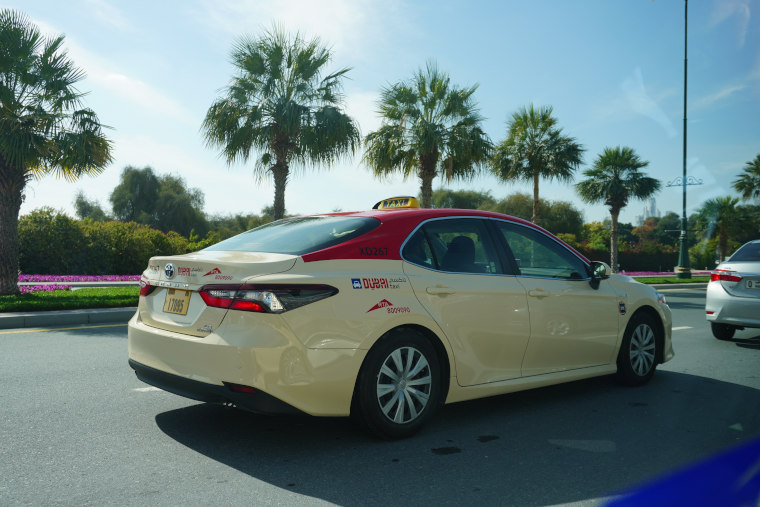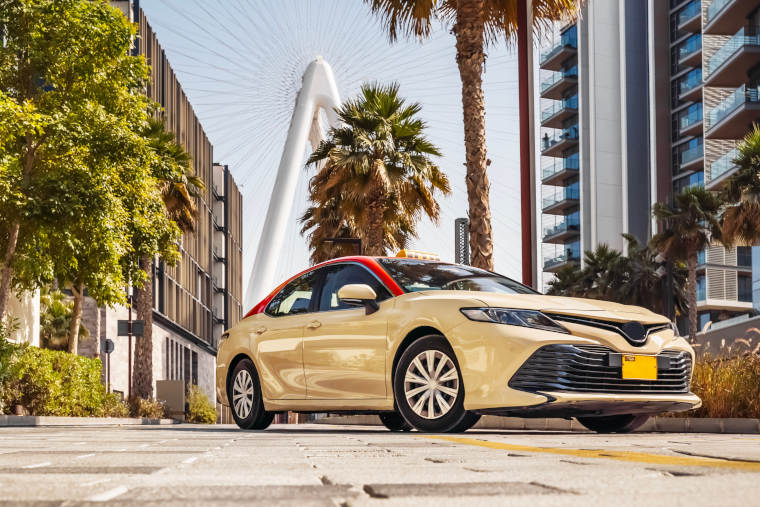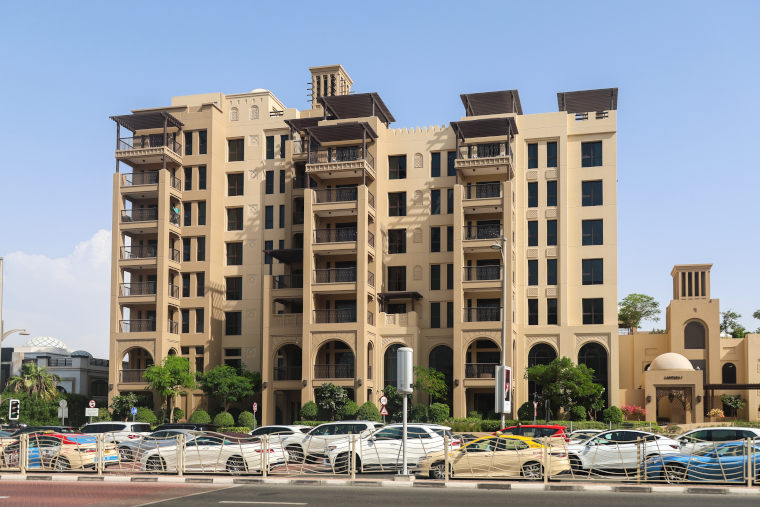

11.09.2025
978
What is it about? Taxis in Dubai are a highly demanded mode of transport since the metro doesn't cover a significant part of the city, and walking can be uncomfortable due to high temperatures.
What to pay attention to? Taxis in Dubai are divided into private and government-run (RTA). The former include Uber and other companies, however, their cost will be higher than ordering a car from RTA. It's also useful to know what dishonest tactics drivers might use, in order to not overpay for your journey.
There are two types of taxis in Dubai:
Taxis controlled by the RTA transport company, which is also responsible for bus services. Most often, you can spot such cars on the streets, near hotels and shopping centres. City taxis are the second most popular mode of transport among tourists after the metro.
City taxis are widespread in Dubai, their services are relatively inexpensive, and drivers are known for their politeness and willingness to help with luggage and boarding. However, it is rare to find RTA taxis equipped with child seats; for trips with children, it's better to order a special family taxi.
 Image source: Khaled Aboun-Nasr / shutterstock.com
Image source: Khaled Aboun-Nasr / shutterstock.com
On the other hand, there is often a situation where families with children get into taxis without specialised child seats, and taxi drivers don't object. Therefore, if you need to catch a taxi in Dubai with a child, you likely won't have problems boarding, and will easily reach your destination.
This happens despite the fact that UAE laws require the use of child seats for transporting young passengers under 10 years old.
Officially, you can pay for a ride in a taxi in Dubai via credit card or NOL transport card, but drivers often prefer cash and may claim that the payment terminal is not functioning, which is a very common trick. To avoid inconvenience, it's better to have the local currency — dirhams — on hand.
Taxis in Dubai in 2025 are easy to recognise by their standard colour scheme and the presence of a sign with the word TAXI. If you see a car without these features, you're most likely looking at an illegal driver who is trying to make money.
You should avoid such offers as they can create problems. Firstly, the cost of the trip will be higher because such cars are not equipped with taximeters. Secondly, it's important to remember that unlicensed transportation in the UAE is illegal: in case of an accident or inspection, you may face a fine for using an unofficial taxi.
In Dubai, taxi services operate through mobile applications. The most popular among them are Uber and the local alternative Careem, as well as several less known companies.
Unlike many countries where such services are often cheaper than regular street taxis, in Dubai they are considered premium and cost more. Standard taxis there typically offer rides in worn-out Toyota Corolla or Camry cars. Meanwhile, Uber and Careem usually provide business-class vehicles, and drivers are dressed in uniform.
There are also women's taxis in the city — pink cars designed specifically for women, especially for those who adhere to strict Arab traditions and prefer to avoid interaction with unfamiliar men.
 Image source: Bojan Milinkov / shutterstock.com
Image source: Bojan Milinkov / shutterstock.com
The drivers of such taxis are women, and there are no additional charges for services such as child seats. However, such cars are almost impossible to catch on the street; they need to be booked in advance, for example, through the reception desk at your hotel.
The most budget-friendly way to get around is to catch a taxi right on the street. There are a lot of taxi drivers in the United Arab Emirates. In 10 minutes, over fifty cars might drive past you. Taxi drivers often wait for clients near shopping centres, beaches, and popular attractions.
In shopping centres, you usually need to go down to the car park and approach the Taxi Line sign. Unoccupied taxis typically queue there, sequentially accepting passengers.
To stop a taxi, it's enough to simply wave your hand if you're standing near the road and see a passing car. You can pay for the trip both in cash and with a foreign bank card — drivers have payment terminals for payment.
If you're worried about missing an important meeting or aren't sure that you'll be able to catch a taxi on the street, try using a taxi booking app. Uber is convenient in Dubai, accessible through the Russian application Yandex Go. However, the most common service in the United Arab Emirates is Careem.
To use it, you need to install the application and go through the registration process, which takes no more than five minutes. You can activate your account with a Russian phone number, but keep in mind that receiving a text message abroad depends on your mobile phone operator, so it's better to register at home.
Careem is extremely simple to use. Specify the point of departure (hotels are easily found by name) and the destination (tourist attractions are also available by name), wait for the driver to be matched through the application, and receive information about the car, its colour, number, and the driver's name — all according to the standard.
In case of difficulties with locating the car, you can contact the driver through a call (if you have a local SIM card) or through an online chat. The driver can wait for you for up to an hour for an additional fee of 30 dirhams.
The taxi booking app in Dubai offers several tariff plans: Comfort — for four passengers; Max — for six people; Kids — with a child seat; Executive — premium-class vehicles; Eco-friendly — electric cars; Personal Captain — for long journeys lasting from five to ten hours.
 Image source: ad-foto / shutterstock.com
Image source: ad-foto / shutterstock.com
Payment for the trip is possible in various ways: through Apple Pay, through Careem Pay, or in cash.
A detailed breakdown of various components of the taxi fare.
The base rate, also known as the starting fee, is a fixed amount that appears on the taximeter at the beginning of the trip. The size of this fee can vary from 5 to 25 dirhams depending on the location and method of calling a taxi. Let's break down in detail how much a taxi in Dubai costs:
These rates are based on a dynamic pricing system developed by the Dubai Roads and Transport Authority (RTA). During major events, including holidays and important exhibitions, the starting fee may change.
The cost per kilometre will vary depending on the length of your journey and current fuel prices. Currently, according to DTC, the rate for taxis is 2.21 dirhams per kilometre.
If your taxi driver has to wait due to traffic jams or a short stop, you will be charged 50 fils for each minute of idle time.
During high demand for taxis in peak hours, booking apps may charge an additional fee when the number of requests exceeds the number of available cars. When booking online, you will receive information about possible surcharges.
Depending on your route, tolls may apply for using toll roads, such as Salik or Darb.
For example, when travelling from Dubai to Sharjah, an additional charge of 20 dirhams will be applied upon entering Sharjah. This fee also applies to other routes between emirates.
Taxi fraud in Dubai is rare, although not impossible. Most often, drivers from underdeveloped countries resort to deception, seeking to earn more through dishonest means.
 Image source: eanstudio / shutterstock.com
Image source: eanstudio / shutterstock.com
For taxi drivers, tourists are the embodiment of affluence, as not everyone can afford a vacation in a place like Dubai. Therefore, they believe that small tricks will not harm the city's guests.
One of the popular fraudulent techniques is refusing to use the taximeter. The taxi driver, upon arrival, names a price that is significantly higher than what would have been shown on the meter. In this regard, it is important to ensure that the device is working when getting into a taxi.
Another method of deception involves choosing a long route to the destination. The price of a taxi ride depends on the travel time, so the driver may deliberately choose a longer path.
To avoid this situation, you should use online maps, setting the starting and ending points, and ensure that the route follows the shortest path.
The main advice for travellers is to only choose cars with taxi checkers. In some popular tourist spots, for example at the final stations of the monorail, passengers might be offered so-called VIP taxis. Externally and technically, these cars are not inferior to standard taxis in Dubai, but they lack any identifying marks.
When a passenger gets into such a taxi, the driver claims that the fare is charged by meter, which does not show any data. The taxi driver provides little information about the upcoming trip. Tourists with limited knowledge of English may find themselves in an unpleasant situation, paying significantly more than expected.
Upon arrival at the destination, the driver presents a “meter” with an amount that exceeds the cost of a standard trip by three or more times. To complaints and questions from passengers, the taxi driver responds that it was a VIP car and that everything was explained in advance, but the passengers simply did not understand. In case of refusal to pay such an inflated amount, the driver may start offering a “discount”.
In official taxis, such incidents are excluded, so it is recommended to use their services exclusively.
You can book a transfer from Dubai Airport using platforms such as GetTransfer, Kiwitaxi, Intui Travel, i'way, and TEZ TOUR. You will need to choose a suitable vehicle, specify the time and meeting place, and then make the payment for the service online. Some services offer free cancellation of bookings.
A taxi from Dubai Airport to the city centre will take you approximately 15–20 minutes. Travel time may vary depending on road conditions and time of day.
Since 2007, Dubai has had water taxis that operate along the shore and between numerous piers. At the moment, there are about twenty such piers, and their number continues to increase. The piers are located near popular attractions and hotels, including Dubai Creek.
Taxis in Dubai are a fast and convenient way to get around. There are many taxis in the city that can take you anywhere. The most budget-friendly option is to catch a taxi on the street or use an official taxi rank. To avoid fraud, it is recommended to use only official taxi carriers and carefully monitor the meter and route.
Article header image source: ad-foto / shutterstock.com